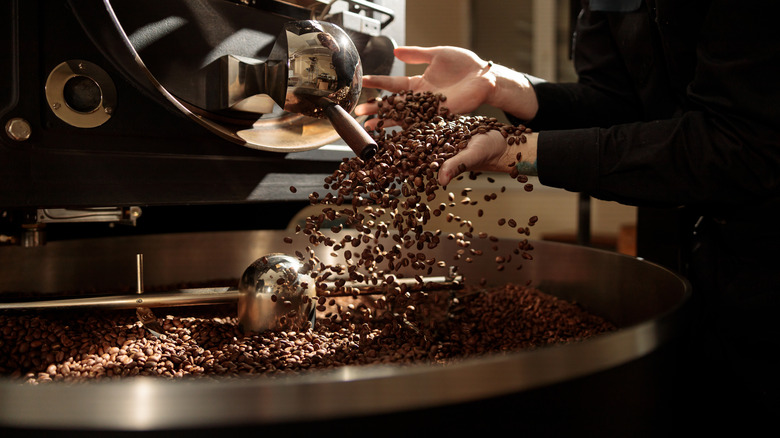The 3 Main Coffee Aromas You Should Be Familiar With
There's much to learn about coffee beyond the latest coffee-shop concoctions. Learning to correctly identify different aromas in coffee can not only make you sound like an expert, but can also enhance your enjoyment of the beverage. This skill can help you select the coffees you're most likely to enjoy based on your preferred flavor notes, and deepen your appreciation with intentional tasting.
Coffee aromas are abundant; brewed coffee contains more than 800 aromatic compounds. Lemon zest, dark berry, dry grass, baking spices, chocolate, cherry, vanilla, maple syrup, floral, and malt are just a few that contribute to a complex cup. Reliably identifying individual fragrances among hundreds is challenging, but becomes more manageable with a starting point. Coffee aromas can be categorized into three compound groups: enzymatic, sugar browning, and dry distillation.
Enzymatic aromas account for the fruity, citrusy, floral, and herbal notes. Sugar browning creates chocolate, caramel, and toasted aromas. Woody, spicy, and smoky aromas arise from dry distillation. When identifying these in your coffee, the roast level can provide clues. Light roasts will exhibit more enzymatic aromas, while medium roasts introduce sugar-browning aromas. Dark roasts bring out dry distillation aromas. Understanding the roast is a useful shortcut, as the roasting process itself transforms the aromatic compounds.
Where each aroma category comes from
Enzymatic aromas develop during the growth and ripening of coffee beans. Coffee beans are the seeds of a tree fruit, somewhat akin to cherries. They are hulled, dried, and sent to a roaster while still vaguely green in color and generally lacking fragrance. The roasting process initiates a series of chemical reactions among the enzymes naturally present in the green coffee beans through the application of controlled heat. With light roasting, many of these compounds are preserved. They're generally the fruity, tomatoey, citrusy, floral, or herbal flavors you can detect in a fresh light roast.
As roasting progresses, the flavor profile shifts. When the roasted beans begin to darken, they undergo the Maillard Reaction — the same chemical reaction between heat, sugars, and amino acids that occurs when bread bakes or meat sears and browns. This process produces new flavor compounds — in coffee, these belong to the sugar-browning category of aromatic compounds. Here is where the chocolatey, caramel, and nutty or toasty aromas originate. The preservation of some enzymatic compounds coupled with the development of sugar browning compounds can result in a coffee that possesses both berry and chocolate notes, or lemon and honey profiles.
Once the roast reaches a dark level, the dry distillation flavors emerge. These compounds are created by the charring of plant fibers, unlocking aromas like clove, pepper, cedar, tobacco, and smoke.
Identifying aromas from the 3 major categories
If you're keen to learn how to identify aromas in coffee, the industry-standard flavor wheel, made interactive by Not Bad Coffee, has got you covered. For instance, grapefruit flavor identification — citric, sour, bitter, peely, sharp, and slightly sweet — can be practiced with one ounce of Ocean Spray. What do hay-like aromas smell like, according to coffee professionals? Try McCormick parsley flakes. To train your nose for roasty, brown flavors and aromas, golden brown cane sugar or canned pinto beans can be used (aroma identification can indeed be an odd science).
Alternatively, you can learn some shortcuts. Much like wine, which is a product of its geography, coffee grown in different regions generally possesses certain characteristics. Brazil is known for its nutty, fruity, and citrusy coffee, while Colombian coffee is celebrated for its caramel notes. Ethiopian coffee may have a berry or floral profile, and Kenyan coffee often carries tomato or black currant notes. Indonesian coffees, such as those from Sumatra, are often smoky with dark chocolate nuances. Indian coffees, on the other hand, are often quite spicy.
If you're not up for sniffing pinto beans, you can begin identifying these notes by brewing a cup of fresh coffee. Take a deep breath and ask yourself, "What does this remind me of?" Start making associations with the three main aroma categories, and you'll be a pro in no time.


